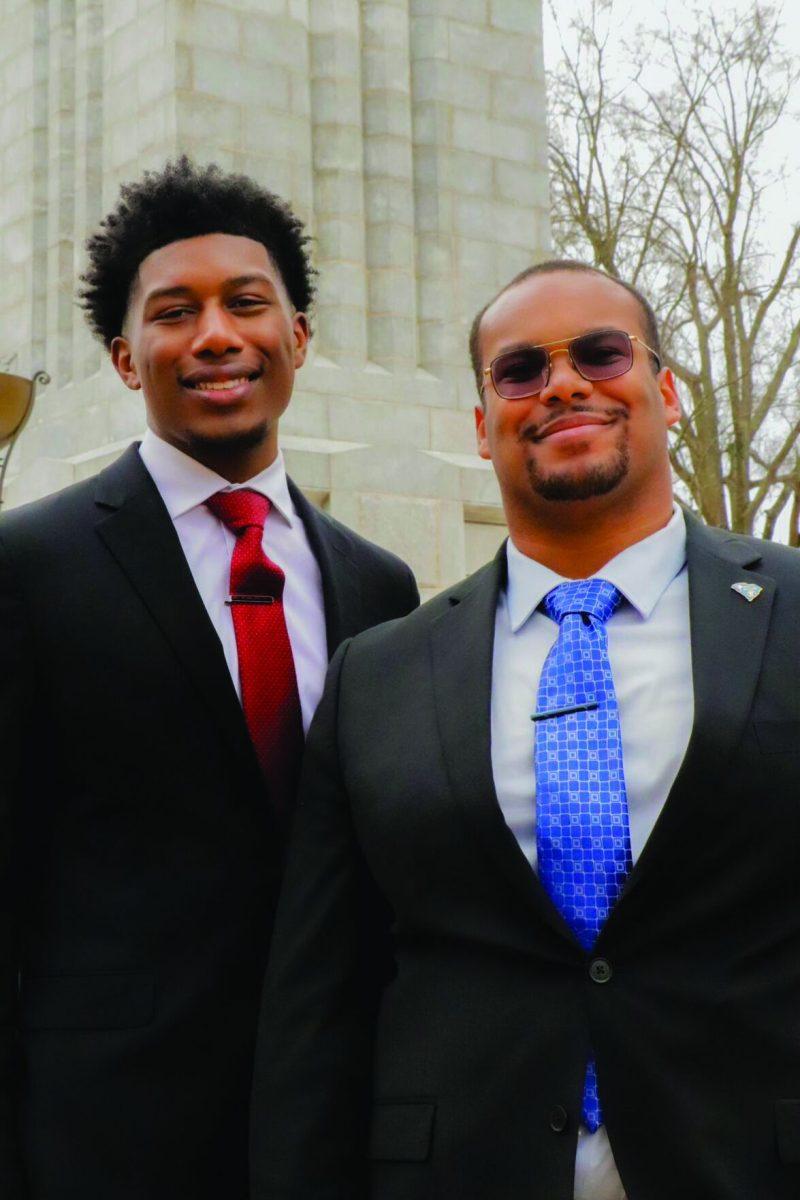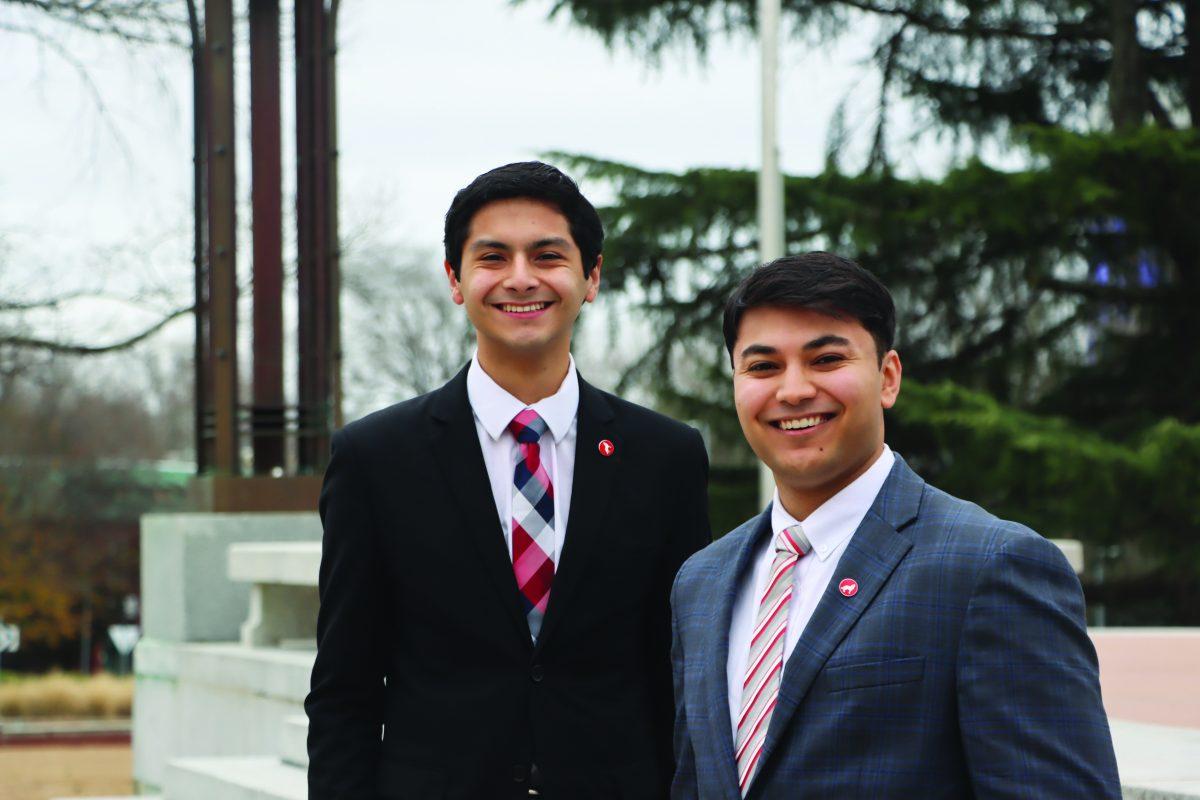In addition to tuition, full-time students currently pay approximately $2,600 in student fees per year. Miles Calzini, the Student Senate President, gave insight into the purpose of student fees and addressed the concerns of the Graduate Student Workers Union, which wishes to reduce or completely eliminate student fees for graduate student workers.
Calzini, a doctoral student in chemistry, said student fees are often confused with tuition. While tuition funds academics, Calzini said student fees cover everything else.
“Anything that is not directly academic, even if it’s essential services, is a fee-funded service,” Calzini said. “So that’s like a lot of things, like the gym, Student Health Services is funded by these, athletics gets a lot of funding, obviously from private sources but also from fees.”
According to the Student Government website, full-time undergraduate student fees are $2,593.25 per academic year, and graduate student fees are $2,605.25 per academic year. The student fee review process for the 2023-24 fiscal year is underway, and the union is urging the University to reduce or completely eliminate fees for graduate student workers.
Shannon McAvoy, a doctoral student in the Center for Geospatial Analytics, is on the union’s working committee for student fees. McAvoy said the committee’s purpose is to make the University aware of the union’s concerns regarding student fees.
“We have been working on bringing awareness to University administration … about the acute financial distress that students are under here at the University,” McAvoy said. “[Graduate student workers] are technically employees of the University, even though the University does not like to pay us that way. So, having to pay student fees back to the University to be able to work here doesn’t really seem like a fair system.”
Along with being teacher’s assistants, McAvoy said graduate student workers also participate in assistantships in which they help produce the research that classifies NC State as an R1 university — meaning the University is involved in extensive research activity.
“A lot of the background work that upholds this institution is done by graduate students, and that’s oftentimes a little bit invisible,” McAvoy said. “That’s what we’re advocating for — to be front of mind for University administration.”
The Student Fee Review Committee, which Calzini co-chairs alongside Dr. Doneka Scott, Vice Chancellor and Dean of DASA, decides the distribution of student fees. Other members of the committee include faculty members, members of the budget office and a few students who are mostly in Student Government.
Student fees are designated to fund 21 programs, facilities and services.
The bulk of the $2,600 student fee cost draws from the Student Center Operations Fee ($156.39), University Wellness and Recreation Fee ($175.50), Student Center Programming Fee ($240.70), Intercollegiate Athletics Fee ($232.00), Student Health Services Fee ($445.00), Education and Technology Fee ($439.28) and Transit Operations Fee ($209.00).
Thirteen smaller fees, which are less than $100, include the Student Publications and Media Fee ($26.25), Student Government Fee ($14.20), Student Legal Services Fee ($17.50), School Student Association Fee ($5 for undergraduates, $17 for graduate students), Student Center Repairs and Renovations ($47.80), Sustainability ($5.00), Association of Student Governments ($1.00), Campus Security Fee ($60.00) and five indebtedness fees.
Five indebtedness fees totaling $499.00 support the Carmichael Complex’s construction and expansion, the renovation of Talley Student Union and renovations to Intercollegiate Athletics facilities.
Calzini said indebtedness fees are the result of the University taking out loans to build new buildings.
“Indebtedness fees are basically [when] the University takes out a loan to build a building, so Talley is a really big example,” Calzini said. “It’s [$260] dollars per semester — that is basically our current students paying off the loan, the construction of Talley, which was approved by students in 2014. And so we’ll be paying that off for 10 more years — it’s basically us making the loan payments for the construction of buildings.”
Calzini said indebtedness will work differently in the future, as North Carolina’s State Legislature recently voted to introduce a 3% cap per year on student fee increases.
“That means that big projects probably can’t be funded with student fees anymore,” Calzini said. “Which is probably a good thing in some ways, because it means that it’s not coming on the backs of students. But it does mean that every time there’s a big project, it has to come from state funds, and so we’re more at the mercy of the state legislature in terms of getting buildings done.”
McAvoy said other local universities have lower student fees, and they should be used as models for NC State to base student fees on.
“Other universities have much lower student fees, and they cover all of this either under tuition or through university endowment funds,” McAvoy said. “If this programming is so essential, it should be covered by the University itself. The University has a huge endowment with discretionary funds that are just not being used at all, and some of that really should be going towards benefiting students, grad students and undergrads alike.”
Calzini said the union’s demands are not currently feasible in the University’s budget because typically, donors give directed donations for specific purposes, and this money can’t be used elsewhere.
“To my knowledge, no rich person has come forward and said, ‘I want to pay grad student fees,’” Calzini said. “That money can’t really be used for that purpose, because it’s all directed funds.”
According to Calzini, the University is considering raising stipends that graduate student workers are paid. Current stipends for graduate student workers range from $8,000 to $30,000, but no doctoral students earn anything less than $12,000 a year.
“I’m a graduate student, I’m affected by this as well,” Calzini said. “Raising their stipends makes it so that they can pay the fees without hurting as much. So if they got a raise of $2,600, that would cover the cost of the fees.”
McAvoy said the union opposes stipend raises in favor of eliminating student fees because stipends can vary between colleges.
“One of the things that we always say to that is that raising stipends is put on the departments themselves,” McAvoy said. “Lower funded departments like sociology, English — those departments will not don’t have the ability to raise stipends, but the University does have the funds and the ability to cut student fees across the board.”
To learn more about student fees and the student fee review process, visit Student Government’s website.













